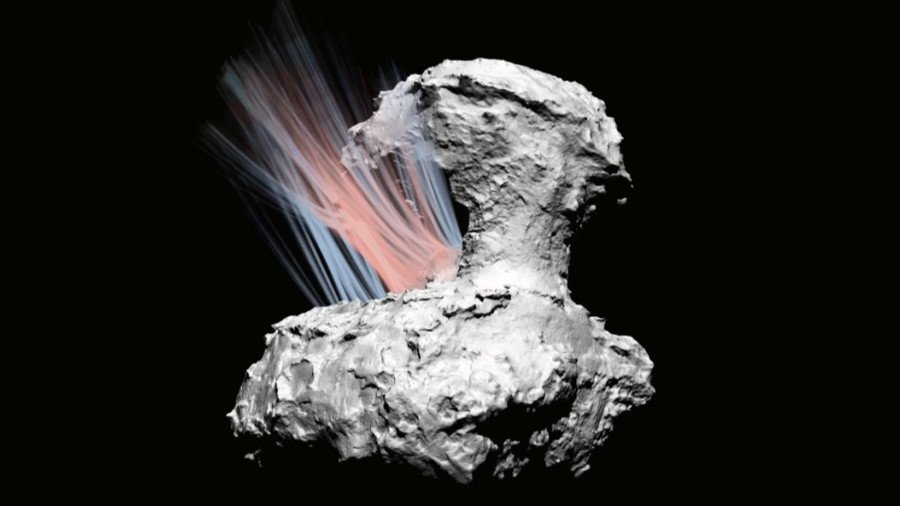Celestial mystery: Riddle of strange gas jets from Rosetta's comet solved (VIDEO)

Astonomers studying strange 'sunrise jets' projecting off Rosetta's comet and out into space believe they have finally cracked the mystery surrounding the weird duck-shaped rock's behavior.
The jets, which reach several kilometers into space, have been identified in space missions going all the way back to 1986. Since their discovery, though, scientists have tried to understand the processes on the surface that cause the mysterious projections – and what they reveal about the comet itself.
READ MORE: Alien invasion: French territory under siege from giant predatory worms (PHOTOS)
In 2014 the European Space Agency’s Rosetta mission landed on the comet, which is officially called 67P/Churyumov-Gerasimenko, and spent nearly two years there studying how, every morning, the comet routinely transforms from an almost lifeless rock to a dust-spewing phenomenon.
☄️ New #science result from #Rosetta: The complex shape & topography of #comet#67P determines the distribution of gas & dust in its atmosphere, creating stunning jets like these 👇Read more on the @maxplanckpress website 👉 https://t.co/FNZLjqgmqPpic.twitter.com/FcwCknqotX
— ESA Science (@esascience) May 23, 2018
The mission took more than 70,000 photos throughout the process and discovered that the early morning activity is caused by frost, which forms at night on the comet’s cold surface. When morning comes and the sun's rays touch the icy coating, it begins to evaporate.
"When the sun rises over a part of the comet, the surface along the terminator almost instantaneously becomes active,” researcher Dr Xian Shi explains. "The jets of gas and dust, which we then observe within the coma, are very reliable: they are found each morning in the same places and in a similar form.”
The new research revealed that the peculiar shape and jagged topography of the comet are responsible for the phenomenon. The researchers analyzed images from the “neck” region of the comet, which connects its two lobes. They used computer simulations to gain a better understanding of the driving processes.
The frost evaporates quickly form strongly-illuminated regions and much slower from areas at lower altitudes or in the shade. In addition – similar to how an optical lens works – pits and other concave structures on the comet virtually concentrate gas and dust emissions. These two effects proved decisive in creating the jets.
On a comet with a more standard shape the structures would not be as prominent, meaning gas and dust would be much more evenly distributed. “The complex shape of Rosetta’s comet makes many investigations difficult. But for this study it was a blessing”, Shi said.
Like this story? Share it with a friend!














